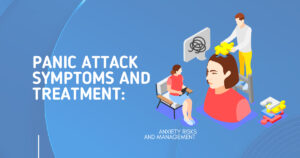If you’ve ever been woken up by a deep aching sensation in your legs, you may have wondered, what do growing pains feel like? These pains are a common experience among children and young teenagers, often striking in the evening or nighttime. Despite the name, growing pains are not directly linked to bone growth, and many experts believe they result from muscle fatigue and overuse rather than actual growth spurts.
While growing pains in the legs can be uncomfortable, they are generally harmless and tend to resolve on their own as a child gets older. Many parents worry when their child frequently complains of pain, questioning if growing pains are real or if they might indicate a more serious condition. Rest assured, growing pains are a normal part of childhood and do not cause long-term harm. Understanding what growing pains are, their symptoms, causes, and how to manage them, can help both children and parents navigate this phase with ease.
What Are Growing Pains?
Growing pains refer to episodes of muscle discomfort, primarily in the legs, that typically occur in children between the ages of three and twelve. The pain is usually felt in both legs, often in the calves, thighs, or behind the knees. These pains do not cause swelling or inflammation, and they tend to come and go rather than persist continuously.
Despite being a well-documented phenomenon, growing pains symptoms are not linked to measurable growth spurts, which is why medical experts continue to debate their exact cause. Some researchers suggest that these pains result from the strain and fatigue that muscles experience after a child’s daily physical activities.
Others believe there may be a neurological or vascular component to the condition. Regardless of the cause, growing pains are not associated with any serious medical issues and do not lead to complications later in life.
Mental Health Center of San Diego
What Do Growing Pains Feel Like?
Children who experience growing pains often describe them as a dull, throbbing ache deep within their legs. The pain typically begins in the late afternoon or evening and may worsen at night, sometimes even waking a child from sleep. Unlike injuries or joint-related conditions, growing pains do not cause redness, swelling, or warmth in the affected areas. The discomfort is typically felt in both legs rather than just one, and by morning, the pain usually disappears.
Parents often notice that growing pains seem to come in cycles, with some nights being worse than others. The unpredictable nature of these episodes can be frustrating, but the pain itself is not harmful. If a child is experiencing discomfort throughout the day or has symptoms that worsen over time, it may be a sign of another underlying condition that should be evaluated by a doctor.
What Causes Growing Pains?
The exact cause of growing pains remains uncertain, but several theories attempt to explain why they occur. One of the most widely accepted explanations is that these pains stem from muscle overuse rather than bone growth. Children who engage in a lot of physical activity during the day, such as running, jumping, and playing sports, may put extra stress on their muscles. This strain can lead to soreness and discomfort, which manifests as growing pains at night.
The Role of Pain Sensitivity and the Nervous System
Another theory suggests that some children may have a lower pain threshold, making them more susceptible to the discomfort associated with growing pains. There is also speculation that growing pains may be related to how a child’s nervous system processes pain signals. Some experts believe there could be a connection between growing pains and circulation, as changes in blood flow and vascular development might contribute to nighttime leg pain.
Are Growing Pains a Cause for Concern?
While the precise cause remains unclear, the good news is that growing pains are not a sign of any serious medical condition. They do not indicate injury, infection, or any underlying illness, and they typically resolve on their own over time.
How Are Growing Pains Diagnosed?
Diagnosing growing pains is primarily based on a child’s symptoms and medical history. Since there are no specific tests to confirm growing pains, doctors rely on a process of elimination. They look for key characteristics, such as pain occurring in both legs, worsening in the evening or at night, and resolving by morning. The absence of swelling, redness, or fever is also an important factor in distinguishing growing pains from other conditions.
When Further Evaluation Is Needed
If a child’s pain is persistent, occurs only in one leg, or is accompanied by other symptoms such as joint stiffness, weakness, or difficulty walking, further evaluation may be necessary. In such cases, doctors may order blood tests or imaging studies to rule out conditions like juvenile arthritis, infections, or other musculoskeletal disorders.
Trusting Parental Instincts
While growing pains are generally harmless, it’s important for parents to trust their instincts. If something about a child’s pain seems unusual or if it begins to interfere with daily activities, seeking medical advice is always a good idea.
How to Relieve Growing Pains in Legs at Night
For parents, the most pressing concern is how to relieve growing pains in legs at night so their child can sleep comfortably. Fortunately, several simple and effective remedies can help ease the discomfort associated with growing pains.
Gentle Massage for Pain Relief
One of the best ways to provide relief is through gentle massage. Rubbing the affected area in slow, circular motions can help relax tense muscles and alleviate pain. Applying a warm compress or heating pad to the legs can also be soothing, as heat helps improve circulation and reduce muscle stiffness. Some children find relief by taking a warm bath before bed, as the heat can relax their muscles and promote better sleep.
Mental Health Center of San Diego
Stretching Exercises for Prevention
Stretching exercises may also be beneficial in preventing and reducing growing pains. Encouraging a child to stretch their calves, thighs, and hamstrings before bedtime can help improve flexibility and reduce muscle tightness. Hydration and a well-balanced diet rich in essential nutrients like magnesium and potassium can also support muscle health and minimize discomfort.
When to Consider Medication
In some cases, over-the-counter pain relievers like ibuprofen or acetaminophen may be recommended by a doctor for temporary relief. However, medication should only be used when necessary and in appropriate doses for the child’s age and weight.
When Should You Call a Doctor About Growing Pains?
While growing pains are typically harmless, there are certain situations where a medical evaluation is necessary. If a child’s pain is persistent throughout the day, becomes progressively worse, or is accompanied by swelling, redness, or difficulty moving, it could be a sign of a different condition. Additionally, if a child is experiencing pain in only one leg or has a fever along with their symptoms, a doctor should be consulted.
It’s always best to seek professional advice if there are any concerns about a child’s well-being. Most of the time, reassurance and simple home remedies are enough to manage growing pains, but a doctor can provide guidance if additional support is needed.
Get Expert Guidance at the Mental Health Center of San Diego
At the Mental Health Center of San Diego, we understand that pain – whether physical or emotional, can impact a child’s well-being. If your child is struggling with frequent discomfort, our team of experts can provide guidance on effective pain management strategies. We offer support for children dealing with stress and anxiety related to pain and holistic treatment options that promote overall well-being.
FAQ
How do you know it’s growing pains?
Growing pains are typically felt in both legs, mainly in the calves, thighs, or behind the knees. They occur in the evening or night and disappear by morning. Unlike injuries, they don’t cause swelling or redness. If the pain is persistent, affects only one leg, or interferes with daily activities, consult a doctor.
What can be mistaken for growing pains?
Conditions like juvenile arthritis, restless leg syndrome, and vitamin deficiencies can mimic growing pains. If the pain is constant, localized to a joint, or accompanied by swelling or fever, a medical evaluation is recommended.
Does growing pain mean you’re getting taller?
No, growing pains are not directly linked to growth spurts. They are more likely caused by muscle fatigue from physical activity rather than bone growth.
Can you have growing pains at 18?
Growing pains usually stop by early adolescence, but some teens and young adults may experience similar muscle aches due to physical activity. Persistent pain in adulthood should be evaluated by a doctor.
Mental Health Center of San Diego
How long do growing pains last?
They can last for months or years, usually disappearing by the early teens. Each episode lasts minutes to hours but should not persist continuously. If symptoms worsen or continue into adulthood, seek medical advice.









